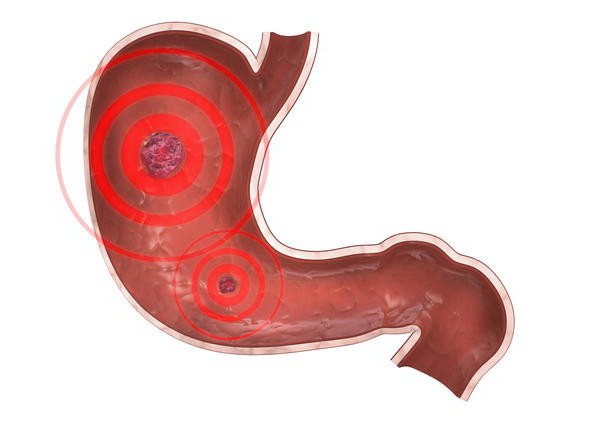Most of the processes in our body depend on prostaglandins, which are produced by almost all tissues. Often they are considered hormones, however, they are not. They act mainly at the site of synthesis, after which they undergo destruction. Hormones, however, exert their influence at a distance and are secreted only by the endocrine glands, and not by most of the tissues.
Synthesis of prostaglandins
Let's look at the process of formation of this substance in the body. Prostaglandin is a substance formed during the metabolism of arachidonic acid, they belong to eicosanoids. Fatty acids are part of the phospholipids that are found in all tissues. Under the action of phospholipase A2, arachidonic acid decomposes, after which it enters the cyclooxygenase or lipoxygenase pathways of metabolism. Prostaglandins are a product of the first.
What is the role in the body?
Eicosanoids perform many functions. Prostaglandin is a substance that takes an active part in most of the processes occurring in our body. For example, prostaglandin E has a depressant effect, that is, it helps to lower blood pressure, affecting vascular tone. In addition, prostaglandins (drugs and naturals) activate the contractile function of the myometrium, due to which they are used to stimulate labor. These substances help increase the synthesis of mucus, which is produced by the goblet cells of the stomach. Mucus performs a protective function, preventing the action of aggressive factors on the mucous membrane. In addition, thanks to these substances, the formation of pepsin and hydrochloric acid is suppressed, which is effectively used in the treatment of diseases of the stomach associated with increased secretion of these substances. They also affect the rheological properties of blood, inhibiting platelet aggregation. Prostaglandin E affects the smooth muscle cells of the trachea and bronchi, it contributes to their relaxation, and, consequently, the expansion of the respiratory tract. An important role is played by prostaglandins in inflammation and pain. These substances not only directly affect the nerve endings and fibers, but also participate in the appearance of other signs of inflammation. A change in vascular tone under the influence of prostaglandins leads to hyperemia, and an increase in the permeability of their walls is the cause of the formation of edema. Prostaglandins, in addition, affect the vagus nerve, causing nausea and vomiting. This side effect is often experienced by patients. Prostaglandins - drugs (names below) are used only for strict indications.

The interaction of prostaglandins and anti-inflammatory drugs
Prostaglandin is a direct participant in the inflammatory process. The action of non-steroidal anti-inflammatory drugs is based on a decrease in their synthesis (the cyclooxygenase enzyme is blocked). Long-term use of NSAIDs leads to a lack of prostaglandins, as a result of which the barrier function of the stomach is violated - a decrease in mucus secretion. This is the main side effect of these medications.
Prostaglandins - drugs: names
Such drugs are used mainly for diseases of the stomach and duodenum of erosive and ulcerative nature. In addition, they are prescribed to stimulate myometrial contraction and improve blood rheology.
Misoprostol
Prostaglandins (drugs) are widely used in the treatment of stomach ulcers and duodenal ulcers due to their antisecretory activity. This action is associated with exposure to prostaglandin receptors that are located on the parietal cells of the stomach. Thus, Misoprostol acts as a natural prostaglandin. Stimulation of mucus formation helps to protect the mucous membrane and prevents the emergence of new ulcerative lesions. All this also creates favorable conditions for the healing of ulcers and erosion.
Alprostadil
The drug is a drug of prostaglandin E. It is usually prescribed in cases where an increase in the reduction of the myometrium is required - stimulation of labor. Also, the drug is used to improve blood circulation - inhibition of platelet aggregation and vasodilation (with atherosclerosis). Available in ampoules for intravenous administration.
Contraindications
Both drugs are not prescribed if there is hypersensitivity to prostaglandins, as well as to analogues of these substances. Among the contraindications are age under 18, pregnancy and the period of breastfeeding. They are also taken with caution in case of renal and liver failure, pathologies of the endocrine system, enterocolitis, anemia.
Self-administration of prostaglandin preparations without consulting a specialist is not allowed. Only a doctor can choose the right dosage and adjust the treatment plan, taking into account the individual characteristics of the patient. Depending on the place of purchase, the price will change. Prostaglandin is available in different forms and under different brands, this also affects the cost.
Side effects
Most often, when taking the drugs, digestive disorders occur - nausea, vomiting, diarrhea and dyspeptic disorders. If there is an allergy, itching, rash, hyperemia and swelling are noted, anaphylactic reactions are also possible. Taking drugs may be accompanied by menstrual irregularities, dysmenorrhea. Myometrial contraction is often characterized by pain in the lower abdomen. Other side effects include dizziness, headache, and body weight fluctuations.
The degree of risk of side effects is individual for each patient. When observing such phenomena, you should contact your doctor and change the treatment plan.
Prostaglandin is a substance necessary in the treatment of peptic ulcer and other pathologies. Usually they are combined with other drugs to achieve the desired effect. The choice of medicine and its dosage depend on the clinical case and the individual characteristics of the patient.